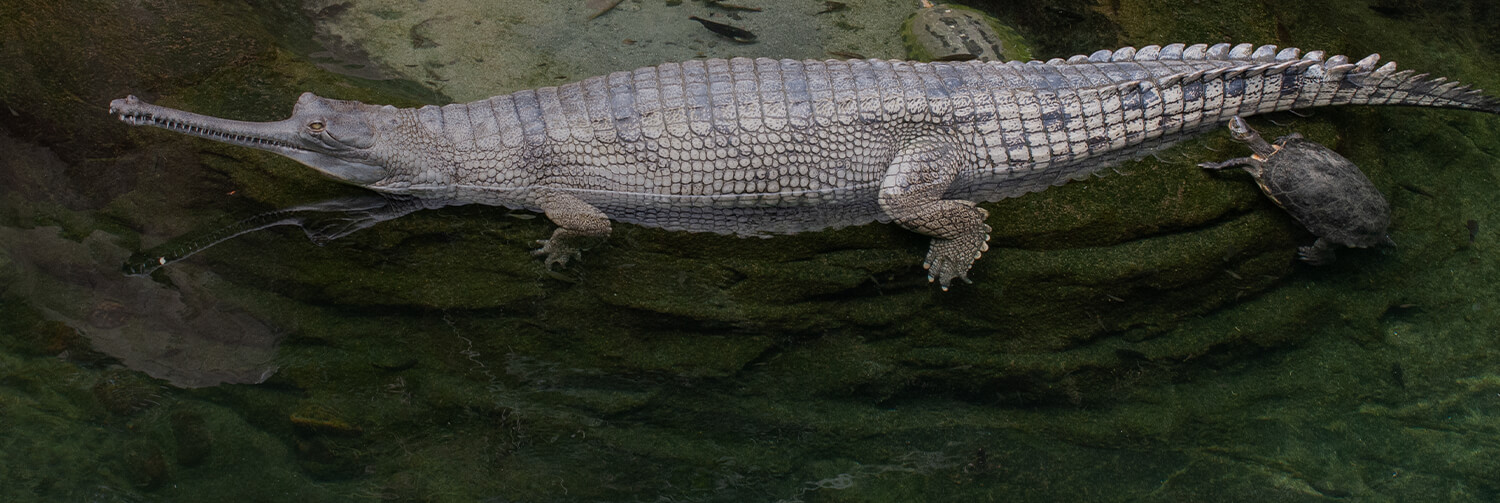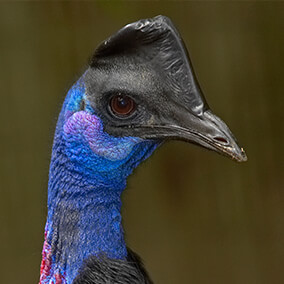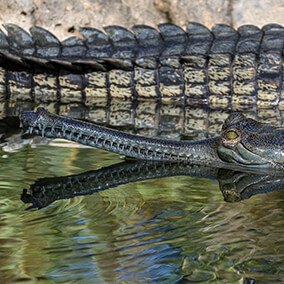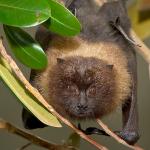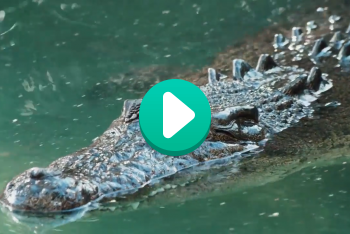
Gharial

Reptiles


Endangered
facts

Most adult gharials are 11 to 15 feet long, but very large males can be longer than 19 feet.

Gharials are “sit-and-wait” predators, with a long, slender snout that holds about 100 sharp, interlocking teeth. They hunt near the river bottom, holding still or moving very slowly, and snapping up fish that come too close.

Gharials can be found in watery locations like rivers and wetlands.
description
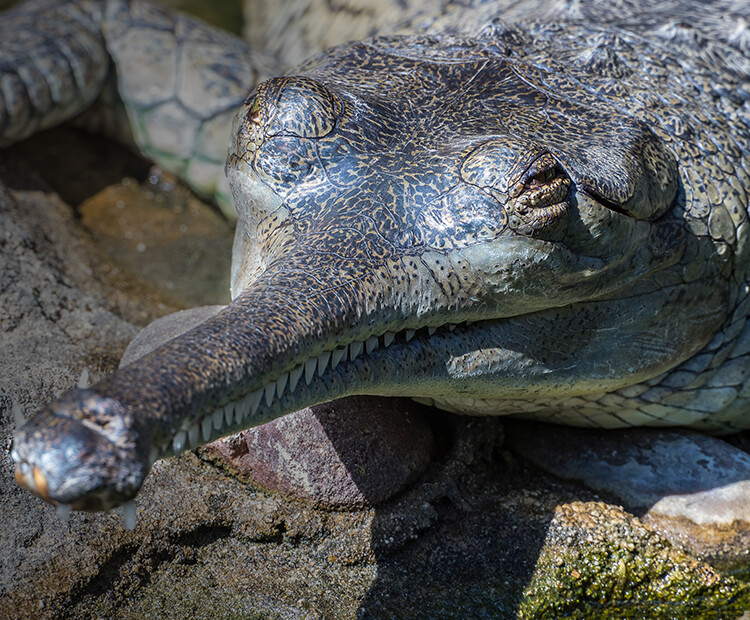
Heavy-duty crocs
Gharials are related to crocodiles and alligators—a group of reptiles called crocodilians. Gharials are one of the largest crocodilians. Some weigh more than a Harley-Davidson motorcycle! Gharials are excellent swimmers, but their legs are too weak to support their enormous body on land. Instead of walking the way other crocodilians do, gharials slide on their bellies.
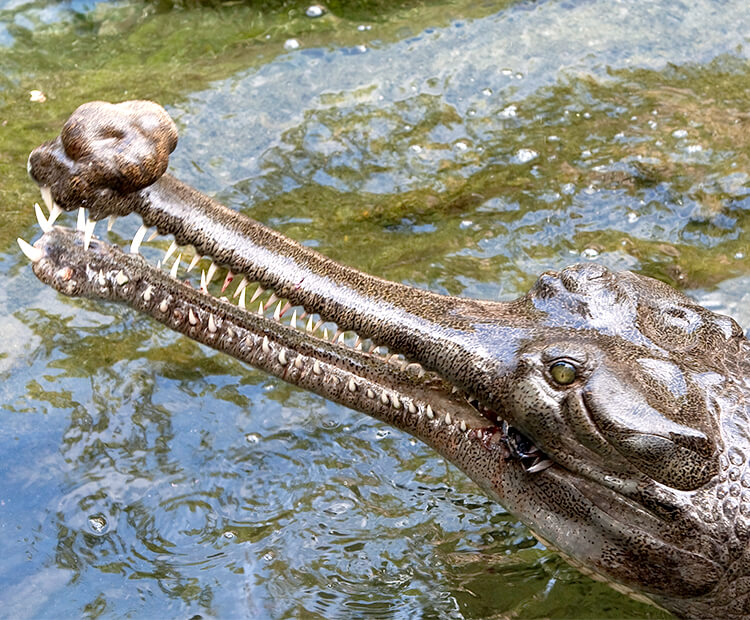
Bump on the nose
When a male gharial is about 10 years old, a bump of cartilage starts to grow at the tip of his snout. Eventually, the bump becomes a big knob. An adult male gharial can make a buzzing noise through its knob. Gharials are the only crocodilians with these knobs, and they grow only on males.
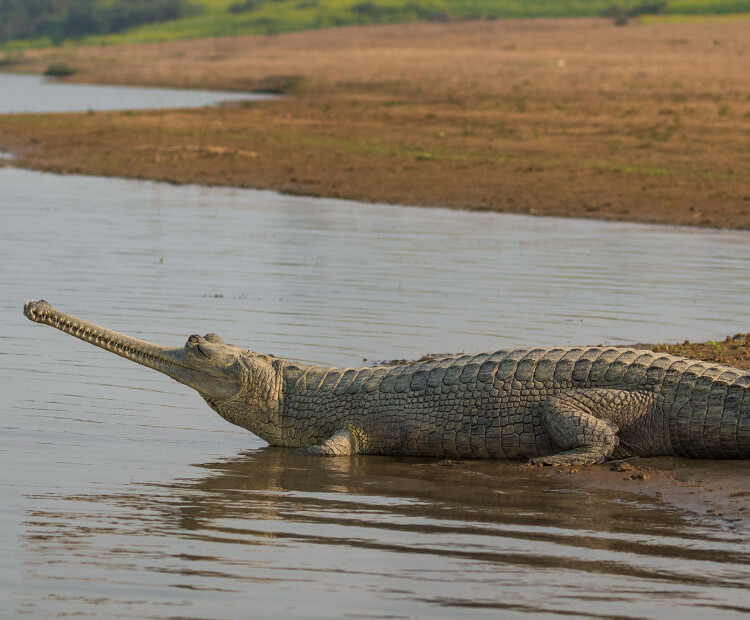
Safe in the sand
Female gharials lay eggs at night. First, they dig a hole in the sand, near water. They lay their eggs in the hole and cover them with sand. A gharial mom stays near her nest until her eggs hatch, to keep them safe from predators like pigs, mongooses, and large lizards.
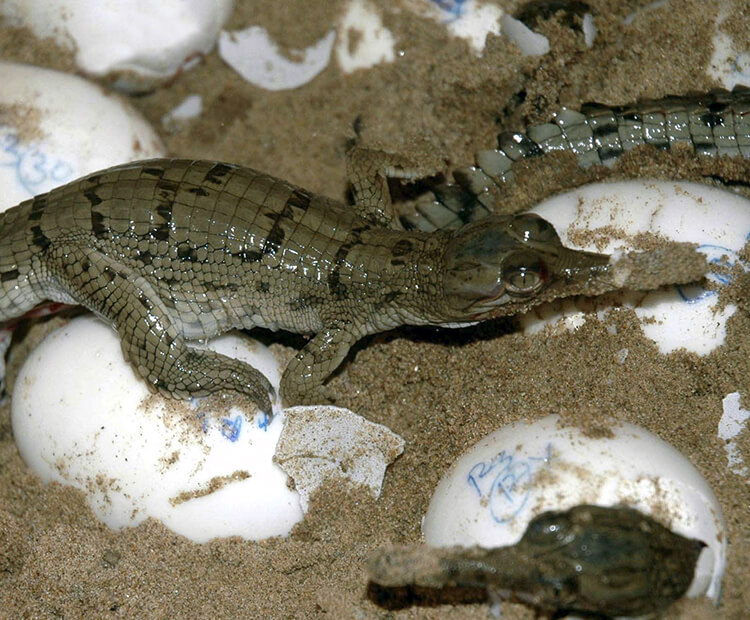
Happy hatch day!
Gharial eggs hatch after 70 days. When the babies are ready, they use a short little tooth on the end of their snout, called an “egg tooth,” to start breaking out of the leathery shell. A mother gharial protects her little hatchlings for several weeks. Sometimes, mom or dad will give the “kids” a ride on their back.
Only about 250 gharials remain in the wild. They face many threats. Fishermen are removing their prey. People settle near rivers and change their habitat. And even though it is illegal, some people hunt them for skin and meat. San Diego Zoo Global partners with other zoos to help this amazing species.

